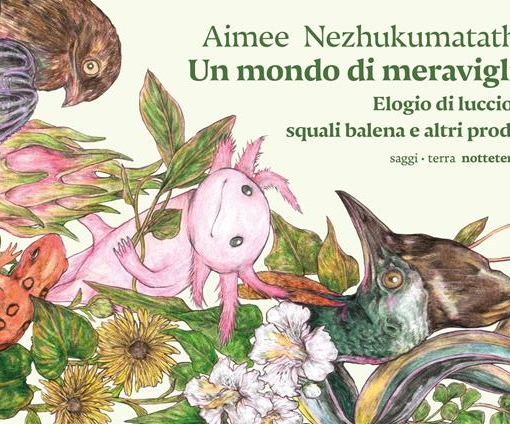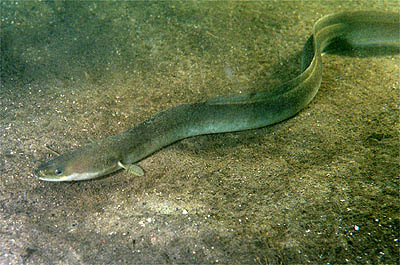
Eels grow in the fresh waters of rivers and lakes but reproduce in the oceans. Several species are known, all very similar to each other, both in the Atlantic and in the Pacific, capable of moving for thousands of kilometers, with migration systems that are among the most complex that is known. The two Atlantic species have a common breeding center located in the Caribbean Sargasso Sea and from here the migration to European and North American freshwaters starts, where they will spend a long period of growth to later return to the starting point.
They make the first movement like larvae, moving within the Gulf Stream towards the coasts that go from Norway to Morocco, or within that of Labrador towards the North American continent. An environmental and genetic dichotomy that differentiates the two populations, known as Anguilla anguilla and Anguilla rostrata respectively. The larva has an appearance similar to a thin and transparent lanceolate leaf, a few centimeters long, which can be transported for a period of up to three years for the European species, much less (about a year) for the North American.
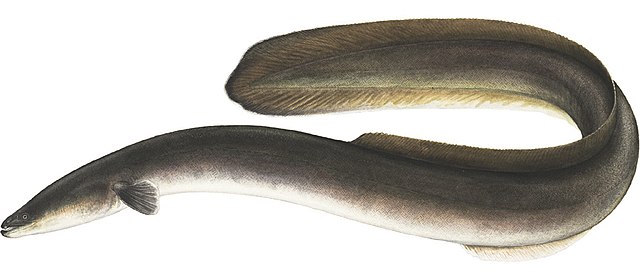
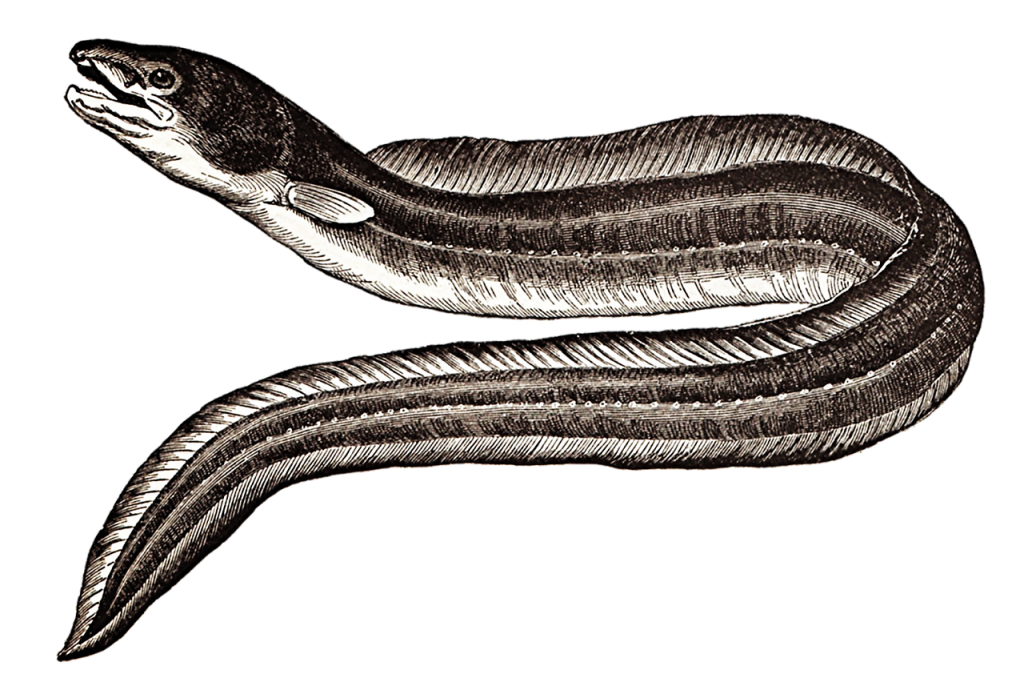
Arriving at the continental margin, the larvae undergo a first metamorphosis, gradually transforming into diaphanous eels, known by the vernacular name of elver. At the beginning of autumn, the elvers appear at the mouth of the rivers and begin their ascent. As they pigment, eventually taking on the typical brown-yellowish color of an adult (the yellow eels), distributing themselves in the most varied bodies of water for a period of weight and dimensional growth that can last up to 10-18 years.
After such a period of time, they undergo a second metamorphosis connected with the preparation for the return migration. The skin thickens, enriching itself with reflective chromatophores (guanophores) which give the belly a silvery color (the argentine); the dorsal fin becomes higher, the eye almost doubles in diameter while the intestine ends up atrophying. Then the eel, driven by an irresistible urge, is ready for the phase of descent towards the sea and for the long journey to the Sargasso Sea. Here it will reproduce, ending its life cycle in those waters. No subsequent trips, no further news of where the adults find their last refuge.
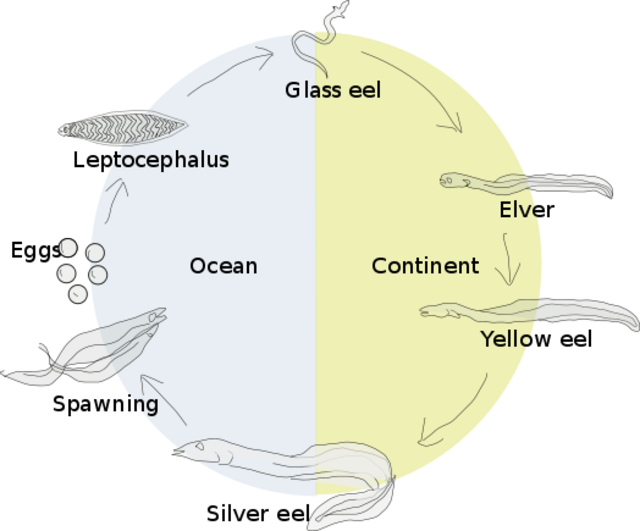
For marine biology, the acquisition of this information has meant a long journey of research with even epic implications. Known and appreciated since time immemorial, no one had any idea where and how it reproduced, so much so that Aristotle claimed that it had no sex, favoring a “spontaneous generation”, a fact long assumed also by the science of the following centuries. Pliny the elder dreamed of a development from pieces of skin that the eel lost when rubbing with the bottom and in fact no one until 1700 had ever found eels in a state of sexual maturity, nor was the location of ovaries and testicles known. Only two descriptions of a supposed ovary by the Paduan academician Antonio Vallisneri (1733) and the Bolognese doctor Carlo Mondini (1783) on specimens from the Comacchio lagoons, although Lazzaro Spallanzani, who uselessly had dissected dozens of them, is in Orbetello that in Chioggia, he questioned its veracity. The so-called “capitoni”, large Argentine eels in the phase of descent towards the sea, do not in fact have mature reproductive glands. Even the most recent works confess that very little is known to date of the reproductive stage of eels “because sexually mature eels have never been caught alive in the wild” (Durif et al., 2021).
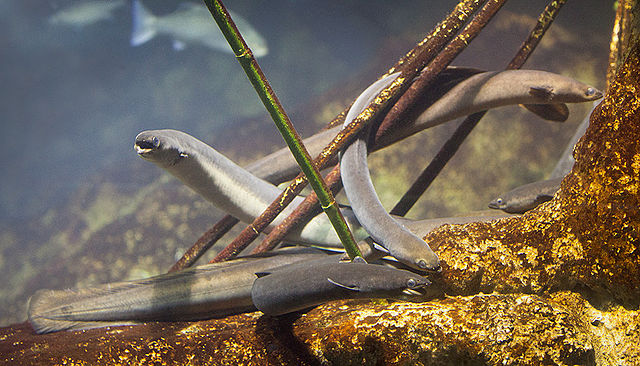
Spallanzani, however, knew from the seventeenth-century observations at the mouth of the river Arno by Francesco Redi, that the young blind eels came back to that river in the autumn by the thousands (so much so as to constitute a famous dish of Pisan cuisine: the “cee alla salvia”) while adult individuals descended it as silver eels on the spring nights. What was before and after it was complete darkness. Spallanzani, combining the scarce and contradictory knowledge of the time with the acumen that was congenial to him, clearly came to a conclusion that was revealed only a century later as reliable: the eels could only reproduce in the sea reaching it with the lowering phase of their life cycle and regaining the fresh waters with the whipping of the blind eels.
In 1856 the German Knaup described, on specimens caught in the Strait of Messina, a diaphanous lanceolate fish and gave it the name of Leptocephalus brevirostris, without identifying any affinity link with eels. That the leptocephalus was actually the larval form of the eel was due to two Italian researchers, Giovan Battista Grassi and Salvadore Calandruccio in 1896. They too worked in Messina, where the strait currents bring to the surface the most diverse bottom species; by breeding the leptocephalics in the aquarium they were able to follow their metamorphosis up to the blind stage, verifying the anatomical correlation with the adults of the eel. A fundamental piece of the natural history of this species had therefore been placed in its place.
Reproduction, therefore, took place in the sea, but where? At this point, the leptocephalus formed the common thread to go back to the reproduction areas, which is not easy given their great distribution in the seas. Sometime later the Danish researcher Johannes Schmidt undertook a long series of researches in the Atlantic. Animated by admirable obstinacy and not allowing himself to be overcome by failures, with the help of very fine nets dragged by the ships Thor and Dana, he was able to reconstruct a map of the movements of leptocephali in the open sea. Their size became smaller and smaller as we approached the Caribbean archipelago of Bermuda from the North Sea coast, where he fished the smaller ones. It was therefore there that the European eels had their breeding center, right at the northern edge of the Sargasso Sea at a depth of 200-300 meters, above an abyssal pit of over 5000 meters. With a very famous article, Schmidt communicated to the Royal Academy in London in 1922 where Atlantic eels were reproduced. A mystery was finally solved!
Schmidt’s research was later perfected and confirmed by numerous observations, leading to the discovery of the reproduction centers of Pacific species mainly by Japanese biologists.
An adverse fate, to which the pollution conditions of the rivers and the oceans themselves are certainly no stranger, has today put the European eel in great danger of extinction, whose status is defined as “critically endangered”. For this reason, research on it has multiplied in order to identify possible management methods suitable for its population recovery. A group of Norwegian biologists, which also includes our Alessandro Cresci, has tried to answer a fundamental question for a migratory species: what are the environmental parameters capable of guiding its journey (Durif et al., 2021), aspect on which there is currently no working hypothesis. Unknown land.
As mentioned, the initial displacement of leptocephali occurs with the help of the Gulf Stream which carries them towards the European coasts. Returning adults cannot enjoy this transport and must make an autonomous movement oriented towards southwest, as the Sargasso Sea is at a lower latitude than Europe. The hypotheses of the Norwegian group are based on the supposed existence of an “imprinting” on the Caribbean place of birth, in a similar way to what salmon do in regaining, after the juvenile migration in the sea, the course of the native river to reproduce. Imprinting which in their case is based on olfactory stimuli. In the case of leptocephali, the proposed imprinting factor would be based on the perception and memorization of the magnetic intensity/inclination value in the area of birth. During the movement, they should instead perceive and follow the variation gradient of the magnetic intensity parameter and in particular that of inclination. This last parameter varies continuously and predictably from the equator, where it has a minimum value (inclination equal to 0 °) to the north pole, where it assumes the maximum value (inclination equal to 90 °). Leptocephali should therefore follow an increase in the inclination parameter on the outward journey. Later the adults would retrace the magnetic path following a gradient of decreasing intensity/inclination.
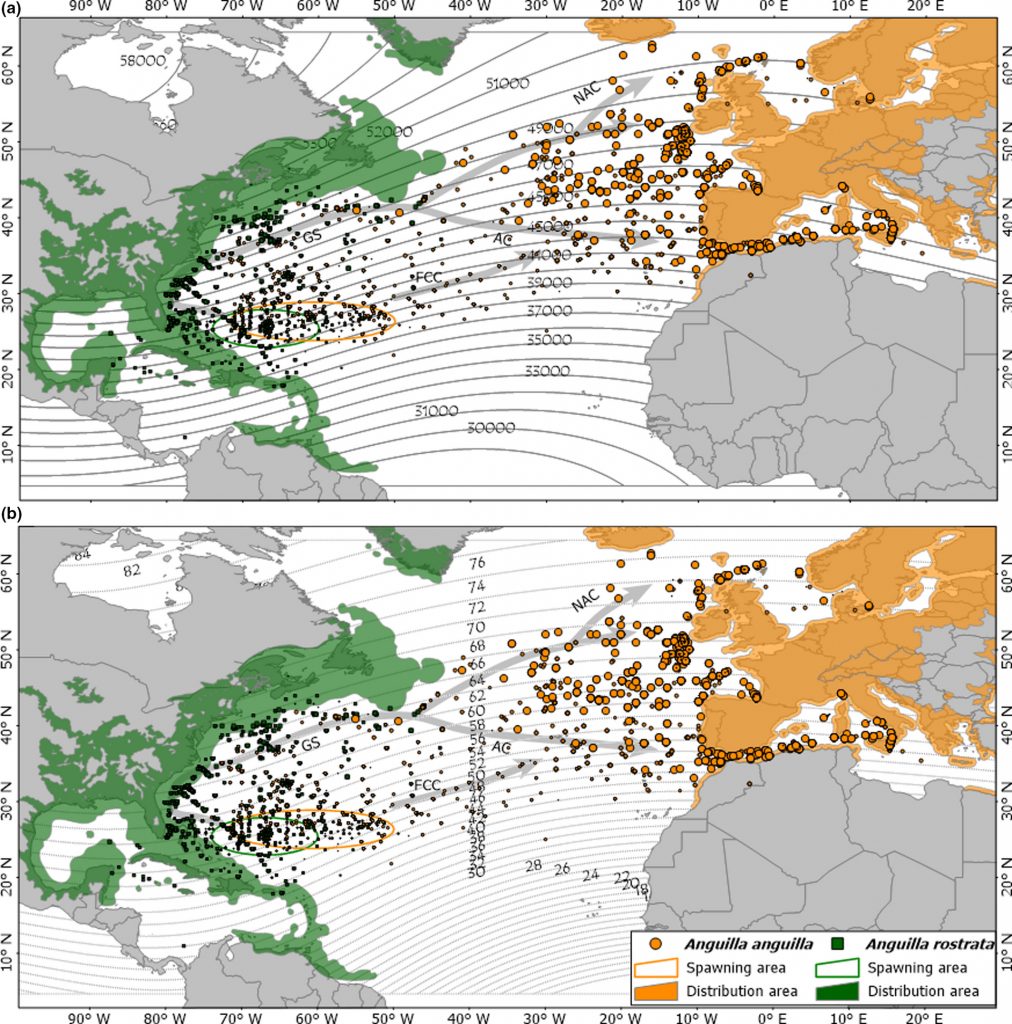
The ability to read the inclination parameter has long been known for migratory birds, who base the functioning of their compass on it; it is instead proposed for the first time for a fish such as the eel, which is especially sensitive to magnetic fields, as always demonstrated by the Norwegian group, so that it can control a given direction of movement (Cresci et al., 2017). The leptocephali would follow the isolines of increasing inclination intensity in the first trip, the adults would instead descend this magnetic gradient afterward.
At the moment it is only a working hypothesis; if it turns out to be right it would be the answer to a question of extreme importance for progressing in the knowledge of the behavior of a species that has intrigued the work of the curious of nature for centuries.
Bibliography:
Durif Caterine e coll., 2021 – An unifying hypothesis for the spawning migration of the temperate anguillid eels. Fish &Fisheries. https://doi.org/10.1111/faf.12621
Cresci Alessandro e coll., 2017 – Glass eels (Anguilla anguilla) have a magnetic compass linked to the tidal cycle. Science Advances. https://doi.org/10.1126/sciadv.1602007
Credits:
Author: N. Emilio Baldaccini. Former Professor of Ethology and Conservation of Zoocenotic resources at University of Pisa. Author of over 300 scientific papers on national and international journals. He is active in the field of scientific education, and co-author of academic textbooks of Ethology, General and Systematic Zoology, Comparative Anatomy.
Translation by Maria Antonietta Sessa



